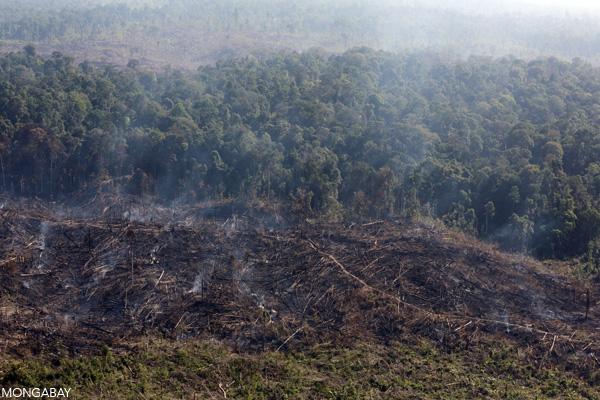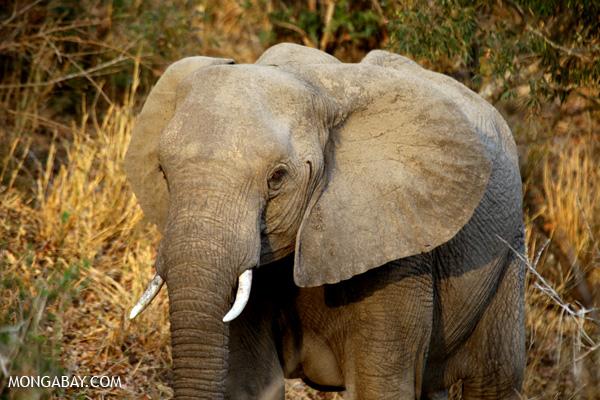Good news on the environmental front in Madagascar has been rare and fleeting in recent years, but today the Indian Ocean island’s Prime Minister gave conservationists a bit of hope by officially decreeing seven new reserves that target critical habitats for endangered lemurs, chameleons, and frogs.
The seven reserves, which span 30,277 (74,816 acres) of Madagascar’s highly threatened eastern rainforest, were established thanks to an initiative by the U.S.-based Rainforest Trust and its local partner, Madagasikara Voakajy.
“By protecting population strongholds of various lemur species, such as the Indri, Aye-aye, Fossa, Tarzan Chameleon and Madagascan Flying Fox, Rainforest Trust and Madagasikara Voakajy will help save these unique species from extinction,” said Rainforest Trust CEO Paul Salaman in a statement. “This is indeed a great day for the spectacular and wondrous wildlife of Madagascar.”
“The creation of these reserves is the result of a six-year process that has involved the close collaboration of a diverse group of stakeholders, including local communities, government entities, and private sector entities,” added Julie Hanta Razafimanahaka, Director of Madagasikara Voakajy. “Working together, we have found a sustainable conservation solution for some of Madagascar’s most threatened species.”
The new reserves — which include Ambatofotsy, Mangabe-Ranomena-Sahasarotra, Ampotaka/Ankorabe, Mahialambo, Ampananganandehibe-Behasina, Analalava and Analabe — protect habitat for at least seven species of lemurs and 60 percent of the range of the critically-endangered Golden Mantella frog.
The designation comes at a critical time for Madagascar: environmental degradation is on the rise. According to data presented on Global Forest Watch, forest loss in Madagascar’s eastern rainforests topped a million hectares between 2001 and 2013, increasingly sharply since a 2009 coup, which was accompanied by an orgy of illegal rosewood logging and a surge in commercial poaching.
Still, most of Madagascar’s forest loss is linked to subsistence activities, namely clearing for rice paddies and cattle pasture as well as charcoal production.
That makes inclusion of local communities a critical component to any conservation strategy, a point recognized in the development of the new reserves, according to Rainforest Trust.
“An inclusive conservation strategy ensures the permanent protection of the new reserves, reduces pressure on natural habitats, and improves human livelihoods for the local community,” said the group. “[Madagasikara Voakajy] has already succeeded in collaborating with surrounding communities to develop reserve management plans.”
“Madagasikara Voakajy is also helping to stop destructive trends by teaching surrounding populations about the importance of conservation through educational activities and the creation of wildlife-themed festivals.”
Ending those destructive trends is critical for the future of Madagascar’s wildlife, which is famed for its uniqueness. More than 80 percent of the island’s plants and animals are endemic. But the clock is ticking fast for Madagascar’s biodiversity. The island has lost significant portions of its forest cover over the past 50 years and 90 percent of its 100-plus species of lemurs are considered vulnerable or endangered.
This article was written by Rhett A. Butler, the head administrator for news.mongabay.com. This article was republished with permission, original article here.




